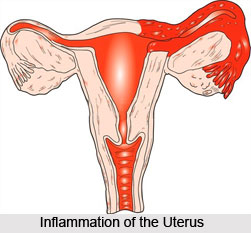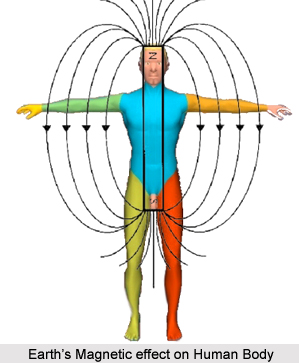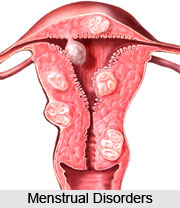 Inflammation of the uterus may be caused by sudden chill, or by exposure to cold during menstruation. This ailment sometimes occurs because of the medicines applied for the purpose of stimulating the menstrual flow. Other causes are the use of irritants to generate abortion, the use of strong purgatives, the incorporation of instruments and preventives, and excessive sexual indulgence. Sometimes bicycle riding, horse back riding and dancing may also cause inflammation of the uterus among weak and underweight women. The dislocation of the uterus in any form may also lead to this condition.
Inflammation of the uterus may be caused by sudden chill, or by exposure to cold during menstruation. This ailment sometimes occurs because of the medicines applied for the purpose of stimulating the menstrual flow. Other causes are the use of irritants to generate abortion, the use of strong purgatives, the incorporation of instruments and preventives, and excessive sexual indulgence. Sometimes bicycle riding, horse back riding and dancing may also cause inflammation of the uterus among weak and underweight women. The dislocation of the uterus in any form may also lead to this condition.
The cause inflammation of the Uterus or endometriosis is particularly always not known. A number of theories have tried to explain the causative factors of this disease, however none can account for each and every case. The most common theory is the "retrograde menstruation" also called the "trans-tubal migration" theory. This theory suggests that during menstruation some of the blood and endometrial tissue backs up into the fallopian tubes, implants in the abdomen, and starts growing. In other words, the blood backs up instead of flowing out through the vagina and the endometrial cells present attach to the nearby pelvic organs and begin to grow. Some of the experts` researching on inflammation of the Uterus believes that all women experience some menstrual tissue back up however, not all women develop this disease. It is believed that an immune or a hormonal problem allows this tissue to take root and grow in women who develop endometriosis. Retrograde menstruation may involve an increase in estrogen or an increased sensitivity to estrogen.
Another theory of inflammation of the Uterus suggests that the endometrial tissue is distributed from the uterus to other parts of the body through the lymphatic system or the blood and is supported by some rare cases were endometrial tissue has been found in such distant areas as the lungs and the retina. Another group of researchers cite the same evidence to suggest that remnants of embryonic tissue, from when the woman was an embryo, may later develop into endometriosis in different parts of the body.
There are also a number of other theories, which suggest that inflammation of the Uterus may begin before the woman is born. Those who subscribe to this theory are of two slightly different opinions. One group believes that portions of adult tissue may retain the ability they had in the embryonic stage, to transform into reproductive tissue under certain situations. Others propose that during the embryonic stage, the endometrial cells may expand in the wrong location, giving rise to endometriosis during the woman`s reproductive period. In both cases, researchers believe that the arrival of reproductive hormones which begins with the start of puberty, generate conditions that triggers this transformation.
The cause of endometriosis remains a mystery and some clues point to an excess of estrogen. The North American women who have the condition belong to the age group 25-40 and are childless. Both pregnancy and progesterone treatment improve the symptoms. Women who have not had a full-term pregnancy are more likely to have inflammation of the Uterus because apparently, the longer a woman does not have a child, the more estrogen she is exposed to during her lifetime.
Other clues specify that inflammation of the Uterus may have an autoimmune component. In one study, all women tested had high levels of auto-antibodies, which are secreted when the body mounts an immune response to its own tissue. These autoantibodies are responsible for the inflammatory response, which causes the pain related with endometriosis. Other risk factors for the development of inflammation of the Uterus include environmental toxins and alcohol. Environmental toxins, like alcohol also seems to have a role in the development of inflammation of the Uterus. A study found that women who drink alcohol have a 50% higher risk of developing endometriosis than those who abstain.
Diagnosis of inflammation of the Uterus is considered uncertain until proven by laparoscopy. It is a minor surgical procedure done under anesthesia in which the patient`s abdomen is bloated with carbon dioxide gas in order to make the organs easier to see. Then, a laparoscope, a small tube with a light at the tip, is inserted into a tiny incision made on abdomen. The surgeon can then move the laparoscope around the abdominal cavity and see the endometrial implants. Endometriosis is categorised by and diagnosed in four stages based on the location and type of growth. Minimal disease is characterised by superficial filmy adhesions; mild disease has superficial and deep filmy adhesions; moderate disease has both filmy and dense adhesions; stage 4 or severe disease has only intense adhesions either superficially or deep.
It would seem that the symptoms would be enough to diagnose a patient with inflammation of the Uterus however laparoscopy is the only conclusive method. This is primarily because many of the symptoms associated with endometriosis can have other causes and secondly, some of the women afflicted do not have any symptoms even in the final stage of the disease. A doctor can often feel the endometrial implants during a pelvic exam but medical laws consider it bad practice to treat this disease without confirmation of the diagnosis. Ovarian cancer sometimes has the same symptoms of endometriosis and treatment with hormones, particularly with estrogen, which is a common treatment for inflammation of the Uterus, could cause a cancer to grow faster. Laparoscopy also shows the locations, extent and size of the implants and may help the doctor and patient make better informed decisions for long-term care and pregnancy.
Researchers are looking into a blood test to assist in the diagnosis of inflammation of the Uterus. Ca-125 is a cellular protein observed in pelvic organs that appear to be elevated in cases of temperate to severe endometriosis. This is still in the experimental stages and laparoscopy is expected to remain the conclusive diagnostic method of inflammation of the Uterus. The causes of inflammation of the Uterus may be many, but the diagnosis and treatment is immediately required for betterment of condition.




















